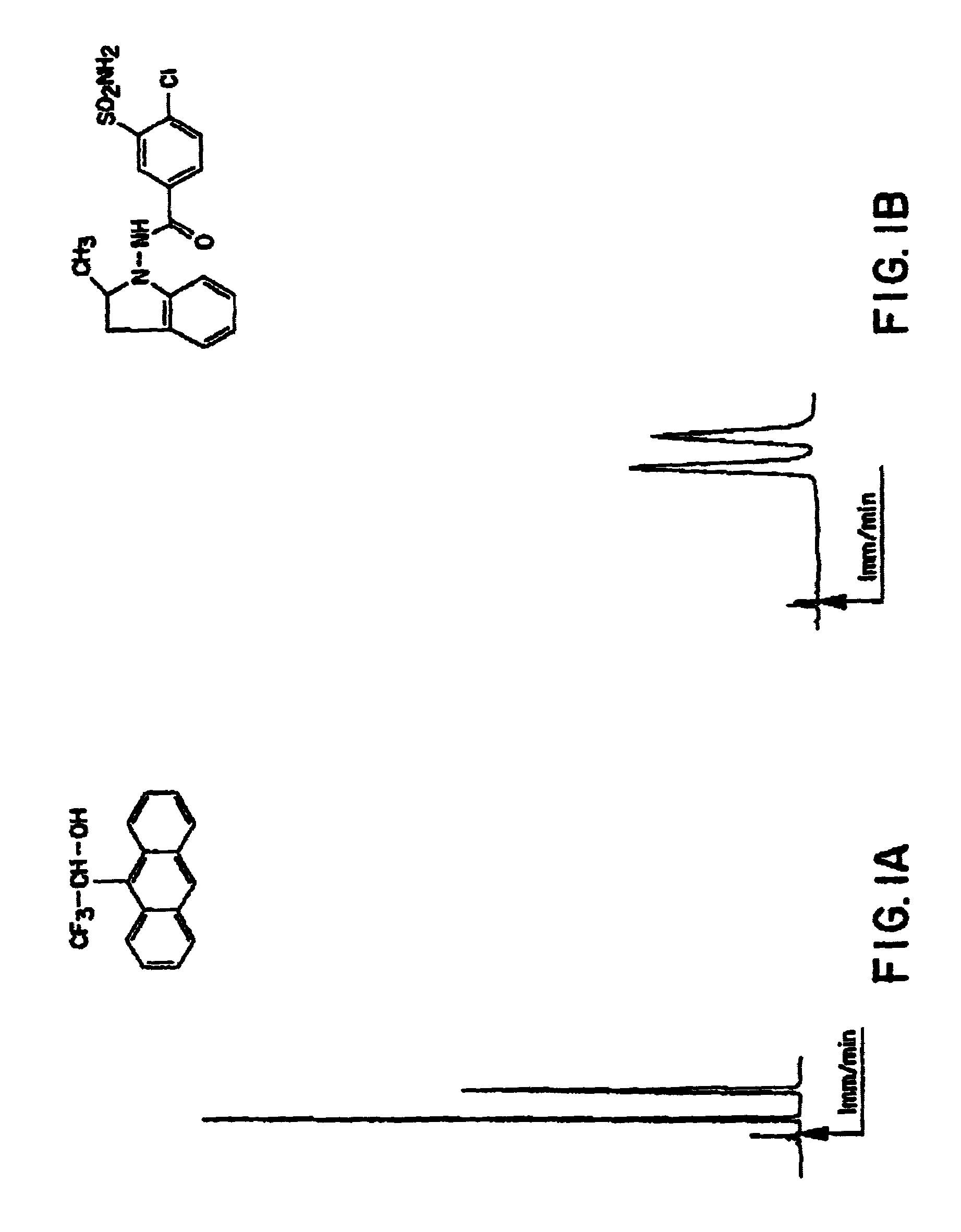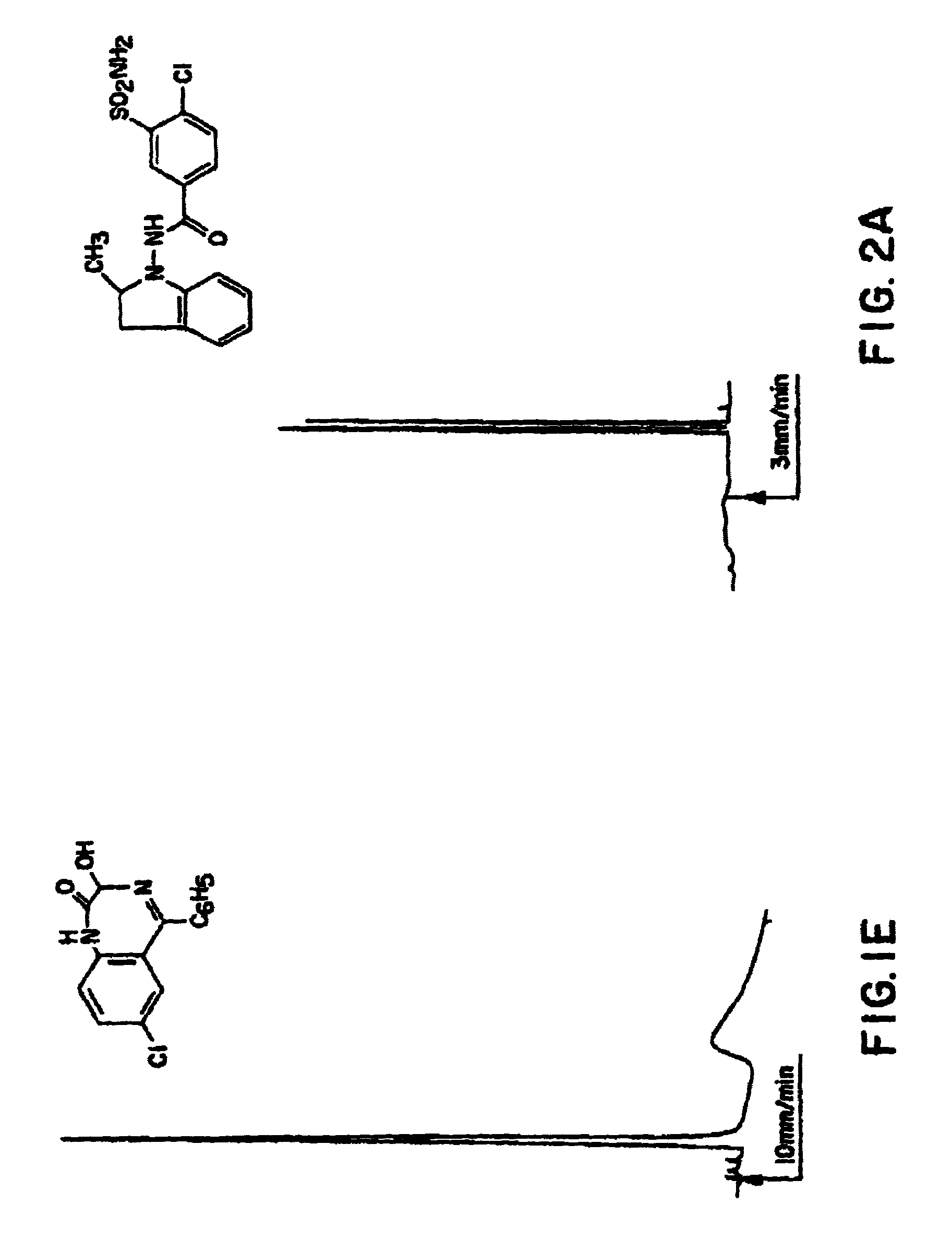Cross-linked chiral compounds and methods of making thereof
- Summary
- Abstract
- Description
- Claims
- Application Information
AI Technical Summary
Benefits of technology
Problems solved by technology
Method used
Image
Examples
example 2
a) Preparation of a tris[1,3,6-(4-allyloxyphenyl)urethanel] Cellulose (for Preparation of a Type B Support)
[0147]2.5 g of microcrystalline cellulose, 75 ml of pyridine and 38 ml of heptane were placed in a reactor. Stirring and heating the reaction mixture dehydrated the cellulose by azeotropic entrainment. 9.31 g of 4-allyloxyphenylisocyanate and 0.05 g of 4-dimethylaminopyridine were added to the mixture and it was heated under reflux for 8 hours. At the end of the reaction, 65 ml of methanol was added and refluxing was continued for 15 minutes. The cellulose derivative was then washed three times with 300 ml of distilled water then 140 ml of methanol.
b) Preparation of a tris[6-(4-allyloxyphenyl)urethane-2.3.6-(3,5-dimethylphenyl)urethanel] Cellulose (for the Preparation of a Type A Support)
[0148]2.5 g of microcrystalline cellulose, 75 ml of pyridine and 38 ml of heptane were placed in a reactor. Stirring and heating the reaction mixture dehydrated the cellulose by azeotropic entr...
example 4
a) Preparation of a Type A Chromatographic Support:
[0151]The composite prepared as above (3-b2) was dissolved in 17 ml of heptane in the presence of a catalytic quantity of benzoyl peroxide. The reaction medium was heated under reflux for 14 hours then filtered and air dried.
b) Preparation of a Type B Chromatographic Support:
[0152]The composite prepared as above (3-b1) was dissolved in 17 ml of heptane in the presence of a catalytic quantity of benzoyl peroxide. The reaction medium was heated under reflux for 14 hours then filtered and air dried.
B-Use of Chromatographic Supports in Accordance with the Invention
IA-Example of Separation on a Type A Support
Test Solute: 2,2,2-trifluoro-1-(9-anthryl)ethanol
[0153]Please refer to FIG. 1A
Mobile phase: 100% pure chloroform
[0154]
UV detection at 254 nm;O. D. (optical density) = 0.2Flow rate: 1 ml / minP = 6.2 MPa (600 psi)°
T0=2.95″ (non-retained solute transit time measured using 1,3,5,tritert-butylbenzene)
Partition ratios: k′1=1.03 k′2=2.56
↑: t...
PUM
| Property | Measurement | Unit |
|---|---|---|
| Bond | aaaaa | aaaaa |
Abstract
Description
Claims
Application Information
 Login to View More
Login to View More - R&D
- Intellectual Property
- Life Sciences
- Materials
- Tech Scout
- Unparalleled Data Quality
- Higher Quality Content
- 60% Fewer Hallucinations
Browse by: Latest US Patents, China's latest patents, Technical Efficacy Thesaurus, Application Domain, Technology Topic, Popular Technical Reports.
© 2025 PatSnap. All rights reserved.Legal|Privacy policy|Modern Slavery Act Transparency Statement|Sitemap|About US| Contact US: help@patsnap.com



